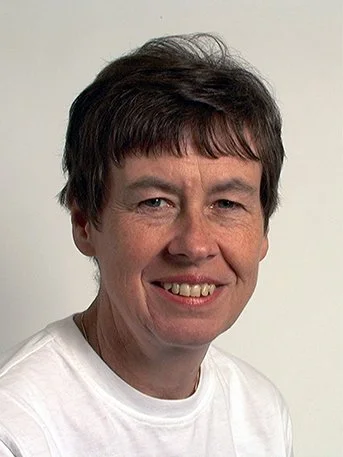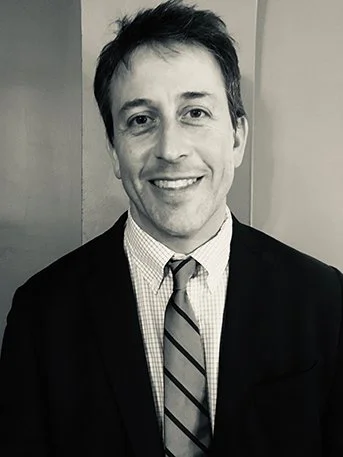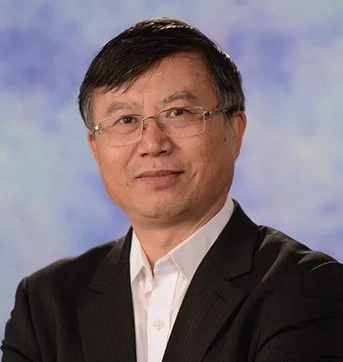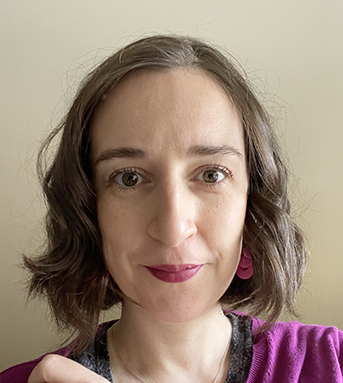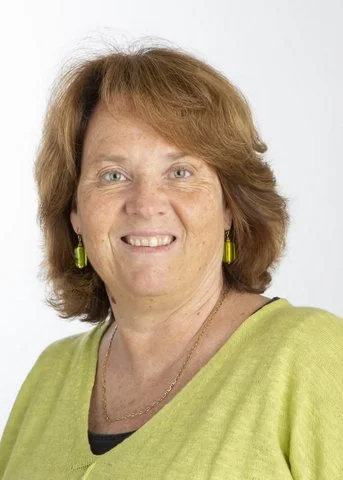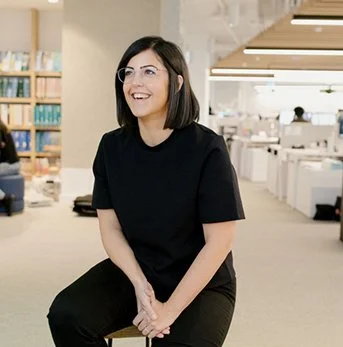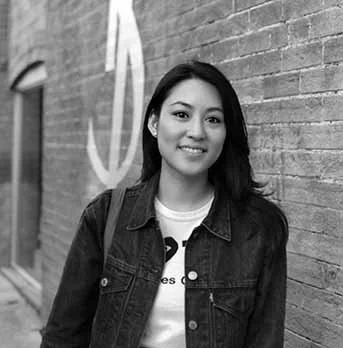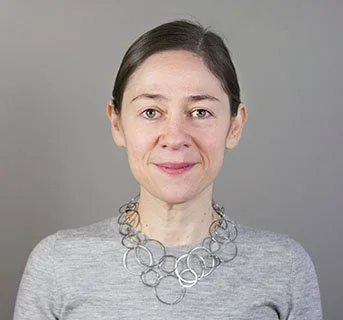
Presenters & Moderators
Presenters
Dr. Burçin Becerik-Gerber
(she/her)
Department Chair, Dean’s Professor, Civil & Environmental Engineering, University of Southern California
Dr. Becerik-Gerber is the Chair and Dean’s Professor of Civil and Environmental Engineering at the University of Southern California. She also serves as the co-director of the Center for Intelligent Environments (CENTIENTS) at USC. Her research focuses on interactions between the built environment and its users and aims to understand and predict how and why humans interact with their built environment. She then uses this information to develop novel technologies, interfaces, tools to improve human experience, well-being and performance as well as to achieve societal objectives, such as energy efficiency, safety, security, health. In her work, Burçin uses machine learning and data science to improve design, construction and system intelligence of user-centered built environments.
Burçin joined USC Viterbi School of Engineering as an Assistant Professor of Civil and Environmental Engineering in 2008. Since then, her work has received support worth over $12m individual and collaborative grants from a variety of agencies, including the National Science Foundation, Department of Energy, Department of Transportation, Department of Homeland Security, California Energy Commission, and various corporate sponsors. She has authored/co-authored over 200 peer-reviewed publications, one book and two book chapters. She serves as an Associate Editor for ASCE’s Journal of Computing in Civil Engineering since 2011 and as an Editorial Board Member for Nature’s Scientific Reports since 2021.
In 2012, MIT’s Technology Review named her one of the world’s top young innovators under the age of 35. She was selected to take part in the NAE’s Frontiers of Engineering Education Symposium in 2011 and Frontiers in Engineering Symposium in 2013 for her innovative research and educational approaches in civil engineering. She is the recipient of the NSF CAREER Award (2014), Viterbi Junior Research Award (2016), FIATECH CETI (Celebration of Engineering & Technology) Outstanding Researcher Award (2018), and Outstanding Engineering Merit Award from the Orange County Engineering Council (2020). In 2018, she was awarded a Rutherford Visiting Fellowship at the Alan Turing Institute, the U.K.’s national institute for data science and artificial intelligence. She is inducted to the National Academy of Construction (NAC) in 2020.
Dr. Sally F. Bloomfield, B.Pharm, Ph.D., HonFRSPH
(she/her)
Chairman, International Scientific Forum on Home Hygiene
Sally Bloomfield is currently Chairman of the International Scientific Forum on Home Hygiene (IFH). Her work is devoted to raising awareness of the importance of hygiene in preventing the transmission of infectious disease in home and everyday life settings and developing and promoting hygiene practice based on sound scientific principles. She is also working to develop understanding of “hygiene issues” such as the “hygiene hypothesis” and “antimicrobial resistance”.
Sally was an Honorary Professor at London School of Hygiene and Tropical Medicine (2003-2019) and Senior Lecturer at Kings College London (1972-1997). She is also Hon Fellow of the Royal Society for Public Health. She works as a consultant in infectious disease prevention. She has published over 120 papers about infection prevention, hygiene and the action of antimicrobial agents.
Dr. Andrea Ferro
(she/her)
Professor/Associate Director for Research, Department of Civil & Environmental Engineering, Institute for a Sustainable Environment; Clarkson University
Andrea Ferro is a professor in the Department of Civil and Environmental and Associate Director for Research Engineering in the Institute for a Sustainable Environment (ISE) at Clarkson University in Potsdam, NY. She is a registered professional environmental engineer in the state of Massachusetts. Dr. Ferro’s technical expertise is in indoor air quality and human exposure to particulate pollutants using direct measurement as well as mechanistic and stochastic models. The overall goal of her work is to improve human health by improving air quality through source control, ventilation and purification strategies, education, and regulatory policy. Her current projects include characterizing of respiratory aerosol emissions from humans, virus resuspension, and aerosol transport in the indoor environment.
Dr. Ferro has published numerous journal articles, conference papers, reports and other articles on indoor air topics. She has delivered approximately 200 invited talks and conference presentations. She is serving or has served on the Board of Directors for the International Society of Indoor Air and Climate (ISIAQ), the American Association for Aerosol Research (AAAR), the Association of Environmental Engineering and Science Professors (AEESP), and the Adirondack Research Consortium (ARC). She is a recent past president of AAAR and a current associate editor for AAAR’s journal Aerosol Science and Technology.
Dr. David N. Fisman, MD MPH
(he/him)
Professor of Epidemiology, University of Toronto
Dr. Fisman is a physician-epidemiologist with research interests that fall at the intersection of applied epidemiology, mathematical modeling, and applied health economics. He trained in medicine and epidemiology at Western, McGill, Brown and Harvard Universities, and has held faculty appointments at Drexel, McMaster, Princeton and the University of Toronto, where he is currently Professor of Epidemiology. During the SARS-CoV-2 pandemic he served on both national and provincial advisory groups, and held emergency COVID-19 research funds from Canadian Institutes of Health Research. He leads the Pandemic Readiness stream at the recently-founded University of Toronto Institute for Pandemics.
Gabriel Gianordoli
(he/him)
Assistant Editor, The New York Times
Gabriel Gianordoli is a designer working on news stories. His work combines art direction, design and programming to create interactive experiences. He was named the World’s Best Designer by the Society for News Design in 2021. Mr. Gianordoli has worked on multiple interactive projects, including the Close Read and Pattern Recognition series and the effort to track the coronavirus. He previously worked at The Wall Street Journal and holds a master’s degree in design and technology from Parsons School of Design.
Janine Glaeser, AIA, LEED AP, NCARB
(she/her)
Architect, Senior Project Manager, University of Wisconsin - Madison
Janine Glaeser is a licensed architect and Senior Project Manager working with the University of Wisconsin- Madison. She holds a Bachelor of Arts in Interior Design from Mount Mary College, Milwaukee, WI and a Master of Architecture degree from the University of Wisconsin, Milwaukee – School of Architecture and Urban Planning.
A strategic thinker and sustainability leader, Janine organizes, empowers, and supports communities to create new opportunities for connection, self-sufficiency, and resiliency. She is a past Vice-chair of the AIA National Disaster Assistance Committee (DAC) and currently a CAL OES Certified SAP Trainer and AIA WI State Disaster Assistance Co-Coordinator. While serving on AIA DAC, Janine participated in the COVID-19 Task Force Response efforts to help inform designers and building owners.
Janine has worked with several NGOs on international disaster response, recovery, and resilience projects, including post-earthquake response in Haiti and Nepal and post flood rebuilding efforts in El Salvador. She has also led domestic response projects, including her role as the Disaster Assistance Field Coordinator working with Wisconsin Emergency Management (WEM) during the 2018 Dane County Flooding events.
Dr. Yuguo Li
(he/him)
Chair Professor of Building Environment, Department of Mechanical Engineering, The University of Hong Kong
Yuguo Li is a Chair Professor of Building Environment at Department of Mechanical Engineering and Faculty of Architecture, The University of Hong Kong. Li was a Principal Research Scientist and the team leader of indoor environments at CSIRO Australia prior to 2000. He studied at Shanghai Jiaotong University, Tsinghua University and Royal Institute of Technology, Sweden. He has been studying city climate, environment studies of infection and indoor air quality. Currently, his team focuses on required dilution for SARS-CoV-2 and other respiratory infection, while exploring the design forms and technologies for buildings and cities for carbonization by 2050. His work led to the findings of the roles played by airflow in the 2003 Amoy Gardens SARS outbreak and in a few outbreaks of SARS-CoV-2. Since 2010s, his team has explored the surface touch network and its roles in fomite transmission of infection. He is a member of WHO IPC GDG for COVID-19. Currently, he serves as co-chair of the Working Group for the WHO-led global technical consultation on the transmission of respiratory pathogens through the air.
Dr. Shelly Miller, PhD
(she/her)
Professor Mechanical Engineering, University of Colorado Boulder, Associate Editor Environmental Science & Technology
Dr. Miller is a Professor of Mechanical Engineering and faculty in the Environmental Engineering Program at the University of Colorado Boulder, holding an M.S. and Ph.D. in Civil and Environmental Engineering from University of California, Berkeley and a B.S. in Applied Mathematics from Harvey Mudd College. Dr. Miller studies urban air quality and works diligently to understand the impact of air pollution on public health and the environment. She is an expert on indoor environmental quality, airborne infectious disease transmission, air pollution and air cleaning technologies, and assessing and mitigating urban air pollution exposures in underserved communities. Dr. Miller is a member of the Academy of Fellows of the International Society for Indoor Air and Climate (ISIAQ) and is also an Associate Editor for Environmental Science and Technology. Dr. Miller has published over 100 peer reviewed articles on air quality including timely papers on COVID-19 transmission and control and is the principal investigator on the National Science Foundation’s Social Justice and Environmental Equity Project in Denver.
Yuliya Parshina Kottas
(she/her)
Graphics & Multimedia Editor, The New York Times
Yuliya Parshina-Kottas is a reporter and graphics editor for The New York Times. She uses her background in 3D visualization, motion graphics and traditional animation and illustration, to cover a variety of breaking news and investigative stories.
Before joining The Times in 2014, Yuliya worked as a motion graphics designer and 3D artist, creating interactive experiences, spatial installations and linear animations for cultural institutions, advertising campaigns and children’s television.
Yuliya teaches Visual Journalism in the Interactive Telecommunications Program (NYU, Tisch) and has previously taught motion graphics, design and immersive storytelling classes and workshops in Pratt Institute, CUNY and Columbia University.
Dr. Kimberly A. Prather, Ph.D.
(she/her)
Distinguished Professor, Distinguished Chair in Atmospheric Chemistry, University of California, San Diego, Scripps Institution of Oceanography Department of Chemistry & Biochemistry
Kimberly A. Prather, Ph.D., holds the Distinguished Chair in Atmospheric Chemistry at the University of California, San Diego. Her research focuses on understanding the sources, composition, and reactivity of atmospheric aerosols and their impact on climate and health. As the founding Director of the NSF Center for Aerosol Impacts on Chemistry of the Environment (CAICE), she leads a team studying the ocean-atmosphere system, particularly the influence of marine phytoplankton, bacteria, and viruses on atmospheric chemistry and climate. During the COVID-19 pandemic, Professor Prather advocated for recognizing aerosol transmission to control the virus's spread, sharing her insights through media and briefings with health leaders. Prather's contributions have earned her elected memberships in prestigious societies, including the American Philosophical Society, American Academy of Arts and Sciences, National Academy of Engineering, and National Academy of Sciences, and fellowships with the American Association for the Advancement of Sciences and the American Geophysical Union.
Dr. Jeffrey Siegel, Ph.D.
(he/him)
Professor, Bahen/Tanenbaum Chair in Civil Engineering, Department of Civil & Mineral Engineering, University of Toronto & Dalla Lana School of Public Health, University of Toronto
Jeffrey Siegel, Ph.D., is Professor of Civil and Mineral Engineering at the University of Toronto and is a Bahen/Tanenbaum Chair in Civil Engineering. He holds joint appointments at the Dalla Lana School of Public Health and the Department of Physical & Environmental Sciences. He has an M.S. and Ph.D. in Mechanical Engineering from the University of California, Berkeley as well as a B.Sc. from Swarthmore College. He is internationally recognized for his work on indoor air quality generally and air cleaning specifically and is a fellow of ASHRAE and a member of the Academy of Fellows of the International Society for Indoor Air and Climate (ISIAQ). His research interests include healthy and sustainable buildings, filtration and air cleaning, ventilation and indoor air quality in residential and commercial buildings, control of indoor particulate matter, and the impact of building systems on indoor microbiology and chemistry. He has published over 100 peer-reviewed journal articles on indoor air quality and related subjects and has been active in disseminating information about filtration and ventilation solutions for COVID-19.
Dr. Amanda Wilson, PhD
(she/her)
Assistant Professor in Environmental Health Sciences, Mel & Enid Zuckerman College of Public Health, University of Arizona
Dr. Amanda M. Wilson studies microbial exposure and risk assessment, human behavior, and exposure modeling. Recently, she has collaborated internationally to develop COVID-19 risk assessment models and co-developed a risk scoring algorithm for a COVID-19 contact tracing app, Covid Watch. She was recently awarded a University of Arizona Health Sciences Career Development Award to expand her research training to address asthma and microbial risk-risk tradeoffs for healthcare workers conducting surface cleaning and disinfection. She received her postdoctoral training at the Rocky Mountain Center for Occupational and Environmental Health in the Department of Family and Preventive Medicine, University of Utah, and received her PhD in environmental health sciences at the University of Arizona. Dr. Wilson was featured in Hispanic Engineer & Information Technology magazine in 2018 and has been interviewed by Discover.

Moderators
Chen Cohen
(she/her)
Partner, DIALOG | BArchSci, DipID, ARIDO, IDC, NCIDQ, RHFAC
Cohen brings an impressive wealth of knowledge in large, complex institutional projects. As an integrated designer with a background in both interior design and architecture, she delivers a holistic approach to designing buildings from the inside out. Recognized by numerous national and international design awards, her work is characterized by exceptional quality of light, careful material choices, strategic use of colour, and timeless design details that translate the architectural language to a human-scale.
Cohen's impressive portfolio encompasses a diverse range of large complex institutional buildings, including academic, civic, sports and recreation, and healthcare projects. She is known for her meticulous and collaborative approach, involving stakeholders from the early concept phase to project completion. Her passion for universal and equitable design is evident in all her projects, as she explores cultural, physical, and gender sensitivities to support and enhance the user experience. And has recently achieved the Rick Hansen Foundation Accessibility Certification (RHFAC) Professional designation to promote conversations and design solutions that improve meaningful use and equitable experiences of her projects.
Dyonne Fashina
(she/her)
Principal Designer, Denizens of Design Inc. | BID, BCIN, ARIDO, IDC, NCIDQ
Dyonne Fashina is Founder and Principal Designer at Denizens of Design; an Interior Design Studio specializing in commercial spaces in the realm of hospitality, workplace and retail.
Her passion for design is rooted in her love for the arts, fashion, culture and architecture. Formally trained in both fine arts and interior design, she has achieved international recognition through a diverse range of projects.
Recent work includes adaptable gathering spaces in landmark cultural institutions, such as the Gardiner Museum, the Columbus Centre, and the McMichael Canadian Art Collection. Dyonne’s starting point is always the identity and history of each space, foregrounding cultural sensitivity and partnering with local makers. Deep research and empathy in her design strategy bring quantifiable business value to every project. Dyonne thrives on finding meaningful connections to inspire everyone involved throughout the design process. She designs with compassion for the human experience, creating spaces that are not only thoughtful, but thought-provoking.
Valerie Gow
(she/her)
Partner, Gow Hastings Architects | OAA, FRAIC, ARIDO, IDC
Valerie Gow is the co-founder of Gow Hastings Architects, a practice that has been recognized as an industry-leader in the creation and transformation of post-secondary institutions. Valued for her comprehensive expertise in both architecture and interior design, Valerie partners with clients and users to find distinctive, intelligent and sustainable design solutions.
Valerie is an active participant in the design community and a passionate advocate for the advancement of women in architecture. She mentors intern architects and thesis students and is a member of the BEAT (Building Equality in Architecture Toronto) Advisory and the Urban Land Institute's Women's Leadership Initiative Championship Team. She has presented at post- secondary leadership seminars for women at both the University of Toronto and Toronto Metropolitan University (TMU).
Valerie has cultivated lasting relationships with Gow Hastings’ clients and the communities they serve. She is a founding member of the Harbourfront Architecture Gallery Advisory Committee and sits on the TMU School of Interior Design Program Advisory Board, the CISV (Children’s International Summer Villages) Toronto Board and the Southwestern Ontario Region Committee of the Royal Architectural Institute of Canada (RAIC). In 2016, she was named a Fellow of the RAIC for her distinctive service to the profession and community at large.
Alice Huang, BID
(she/her)
ARIDO Intern Member | Freelance Designer
Alice Huang is a recent graduate of Toronto Metropolitan University’s Bachelor of Interior Design program. She previously completed an Honours BA from the University of Toronto in International Studies: Culture & Communications with minors in Sociology and Media Studies.
Working under Professor Lois Weinthal as an undergraduate research assistant at TMU, they examined interior conditions during the Covid-19 pandemic through an international project titled Interior Archipelago. The project’s findings were presented at digital and physical exhibitions, conferences, and published in Interiors in the Era of Covid-19. Their research sparked an interest to share and further their investigation into the impact of the interior and its layers on human health.
Alice is a multidisciplinary designer with interests that include research-based design, placemaking and emotive architecture, and designing for health and well-being.
Pooja Ramaswamy
(she/her)
Design Strategy | BID, MBA Candidate
For a decade, Pooja’s professional experience in interior design and design strategy applied to transit environments, hospitality, and workplace interiors has supported strategic transformation. In her current role as a design strategist at Metrolinx, she leans on her strengths of storytelling and strategic thinking to provide guidance on the design of customer-facing physical touchpoints in new transit environments shaping the city. Through developing design guidelines, conducting ongoing design reviews of capital projects, and facilitating dialogue between stakeholders across the organization, she ensures the needs of all customers are responded to thoughtfully and inclusively while aligning with organizational objectives. In her prior role as senior designer at HOK, she worked in interdisciplinary teams to design hotel and workplace interiors for global clients in Canada, USA, and the Middle East.
Pooja received her Bachelor of Interior Design at Toronto Metropolitan University. Alongside her professional role, she is currently a part-time MBA candidate at the Rotman School of Management where she continues to augment her expertise with economic innovation and foresight to advocate for strategic and inclusive design thinking in global leadership.
Lois Weinthal
(she/her)
Professor, School of Interior Design, Toronto Metropolitan University | ARIDO, IDC, IDEC, NCIDQ
Lois Weinthal is Professor and Graduate Program Director in the School of Interior Design at Toronto Metropolitan University in Canada. Her research and practice investigate the relationship between architecture, interiors, clothing and objects, resulting in works that take on an experimental nature. Her teaching explores these topics where theoretical discussions in seminars are put into practice in the design studio.
Her published books include editor of Toward a New Interior: An Anthology of Interior Design Theory, which organizes the interior as a series of layers that surround the body. She is co-editor of After Taste: Expanded Practice in Interior Design, Handbook of Interior Architecture and Design, and most recently Digital Fabrication in Interior Design: Body, Object Enclosure. She has received grants from the Graham Foundation, Fulbright, DAAD and SSHRC, and has exhibited and lectured nationally and internationally. Previously, she was Director of the Interior Design Program at Parsons The New School for Design and Graduate Advisor for the Master of Interior Design Program at The University of Texas at Austin. She has held honorary visiting professor positions at the Glasgow School of Art and Middlesex University London. She studied architecture at Cranbrook Academy of Art and the Rhode Island School of Design.

